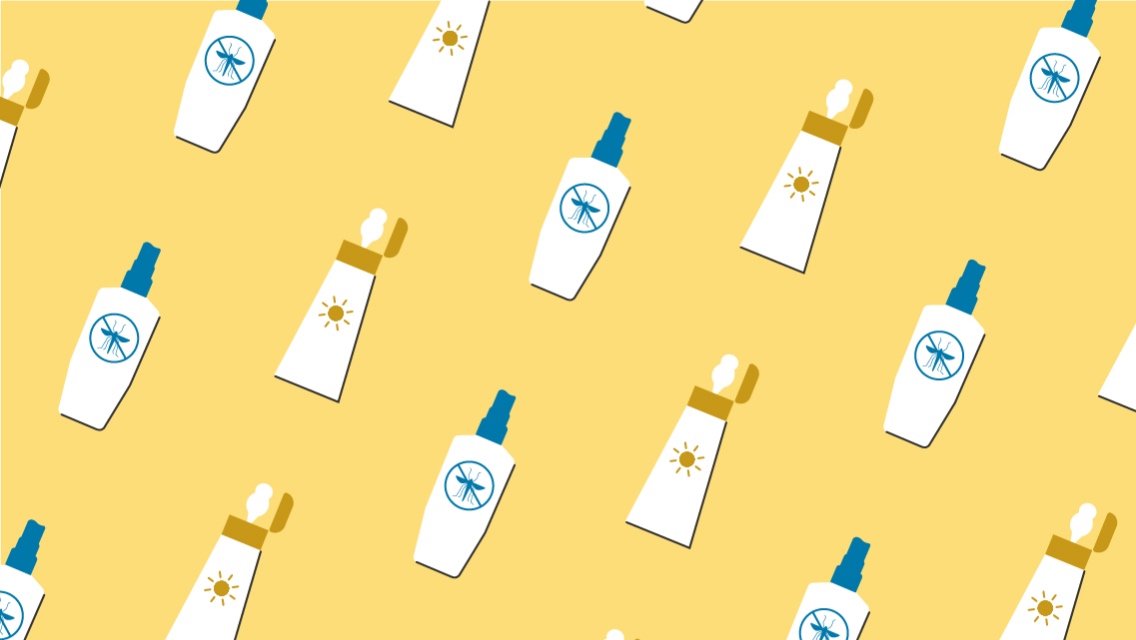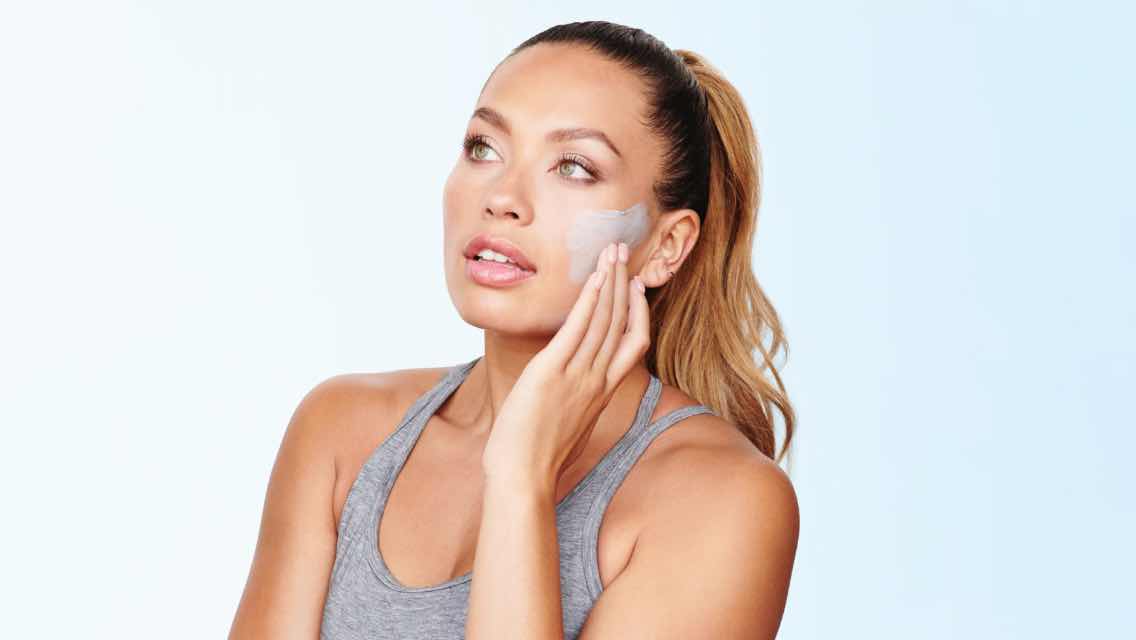Summer is in full swing, and that means fun in the sun is a top priority. While studies show that mild doses of daily sun exposure can benefit your health, it’s essential to protect your skin if you’re going to spend long stretches in direct sunlight.
We’re encouraged to make sunscreen a daily part of our beauty regimen — and to lather up with it whenever we’re outside or before jumping in the pool. The issue is that many of our everyday lotions and sprays can contain harmful chemicals and, despite their high SPFs, still offer weak sun protection.
With the skin being the largest and most absorbent organ on our body — soaking in more than 60 percent of what we put on it into our bloodstream — it’s important to know what to look out for before applying these products.
Minimizing Chemical Absorption
While our skin serves as a protective barrier to the world around us, it absorbs substances that are small enough. Most phthalates, fragrances, and chemicals easily penetrate the skin or can be inhaled through the lungs — putting them on the fast track directly into the bloodstream.
Once these chemicals make their way into our bloodstream, they can set up camp for a while. One FDA-led 2020 study found that chemical sunscreen ingredients are systemically absorbed after one application, and some components can stay in the blood for at least three weeks.
The good news is there are some simple steps you can take to guard yourself against these harmful additives.
Reduce Your Exposure
You may be thinking about the number of personal-care products you use regularly — and feeling overwhelmed by the thought of weeding them out all at once. Don’t be overwhelmed: You don’t need to eliminate everything right away. Start small with these tips:
- Eliminate the harmful products in your cabinet that you leave on your skin for multiple hours at a time. This may include ordinary sunscreens, bug sprays, foundations, and moisturizers. Approach it in stages: As you run out of an existing product, replace it with a clean one.
- Take advantage of the free resources out there. The Environmental Working Group’s EWG Skin Deep® allows you to search thousands of products by category or brand name and read their safety ratings. For product info on the go, download the Think Dirty® app. In seconds, you can receive information on a product’s ingredients and toxic ratings simply by scanning the barcode.
- Read the ingredients list. If you cannot easily pronounce or identify the items on the label, it’s a good sign you might want to look further into the product or toss it aside. Unfortunately, just because a product claims that it is natural or has a certified organic sticker does not necessarily mean it’s clean.
- Wear a protective base coating. If there’s a potentially harmful brand that you adore and can’t quite let go of yet, try wearing a layer of coconut oil (rosehip and jojoba oil also work well) underneath to serve as a buffer between the product and your skin.
How to Pick the Sunscreen for You
To help you find an effective and natural sunscreen, consider this advice from the EWG’s 2022 Sunscreen Guide:
- Beware of 50+ SPF. The EWG recommends that consumers avoid products touting an SPF higher than 50+, since they have not been proven to provide any additional protection.
- Opt for lotion over spray and powder sunscreens. Because spray and powder sunscreens are more easily inhaled, lotions are considered a safer option.
- Look for zinc oxide or titanium dioxide on the label. These are clean, active ingredients in mineral-based sunscreens that block UVA rays. (These ingredients are both of concern, however, when used in spray or powder products due to exposure through inhalation.)
- Beware of oxybenzone. Stay away from sunscreens that contain this active ingredient, which has been linked to allergic reactions and potential endocrine disruptions.
- Avoid sunscreens with insect repellent. A two-in-one product sounds great — especially if you’re dealing with squirrelly children — but stray away from this not-so-dynamic duo. They’re best when applied separately. In some studies, the combination led to a 30-plus percent reduction in SPF. What’s more, sunscreens enhance absorption of DEET into the skin, potentially increasing toxicity — particularly in children.
- Don’t rely solely on sunscreen when UV radiation is at its peak. Make sure to pack visors, umbrellas and long sleeves. Sunscreen is most optimal when used as a part of a broader sun-protection strategy.
- Reapply — again and again. Cream sunscreens can wash off in the water, rub off on towels, and wear off in the sun. Make regular reapplication part of your routine.
Additional Sun-Protection Strategies
- Try to go in and out of the sun frequently during the day. This pattern can help reduce the length of time your skin is exposed to UV rays.
- Wear hats for added protection. Not only are they fashionable, but they also protect the scalp, ears, neck, and shoulders.
- Dress in UV-protective clothing. This is especially beneficial for kids who may be harder to continuously cover in sunscreen.
- Build up a tolerance for the sun. On lovely days, go outside in a T-shirt or tank top for five to 10 minutes at a time. As your skin builds up a tolerance, you may be better able to enjoy the sun’s benefits without burning.
DIY Sunburn Remedies
Now let’s say you’ve taken all the necessary precautions but get caught outdoors longer than expected and end up with a burn to your skin. These natural, at-home solutions can help alleviate the discomfort:
- Use an apple-cider vinegar-based skin toner to help restore the skin’s natural balance of oils and pH. Combine 1 cup warm water and 1/3 cup apple-cider vinegar. Apply directly to the face and neck using a cotton ball wet with solution. You can also use this toner to apply to anywhere you’re experiencing the effects of a sunburn. This may be used once or twice a week, with any leftover mixture stored in a cool, dark place.
- Soothe a sunburn by soaking for 30 minutes in a bath of cool water and 2 cups of apple-cider vinegar.
Just like sun exposure, another inevitable part of summer is bugs and the bites and itching that come with them. In a perfect world, we’d be able to keep the pesky bugs at bay altogether. Until then, it’s essential to reach for more natural repellents.
Bug Off
It’s not just excessive sun exposure that poses a risk in the summer — pesky bugs can derail outdoor adventures, too. An effective insect repellent can make all the difference.
Instead of using standard products and showering your body in damaging chemicals, however, try a DIY insect repellent made by mixing 1 cup apple-cider vinegar and 1/4 cup water. For extra health benefits, add essential oils such as eucalyptus, lemongrass, citronella, tea tree or rosemary. Not only can they help repel bugs, but they also smell fantastic!
Since the change in seasons always gives us reasons to celebrate and enjoy ourselves to the fullest, it’s crucial not to be bogged down with worry about what ingredients might be hanging out in our skincare essentials. Now that you’re more in tune with what to watch out for when choosing a sunblock or bug spray, it’s time to focus your energy on soaking in all the bright and shiny experiences that summer has to offer.




